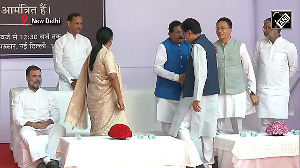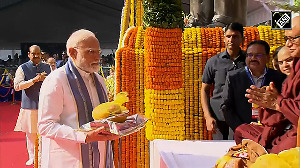 India’s secular democracy remains mortgaged to rabid communal politics. Quite clearly, the bloodshed by the religious communities is absolutely political. Even non-BJP political formations have their own Narendra Modis, says Mohammad Sajjad.
India’s secular democracy remains mortgaged to rabid communal politics. Quite clearly, the bloodshed by the religious communities is absolutely political. Even non-BJP political formations have their own Narendra Modis, says Mohammad Sajjad.
Way back in 1961, a communal riot had broken out in Jabalpur, Madhya Pradesh. After the orgy of communal violence in the wake of Partition, this was the first riot in Independent India. A case of eve-teasing was the immediate spark even though economic conflict was at its roots and the general election of 1962 was not far away.
In Muzaffarnagar, western Uttar Pradesh, a communal riot broke out on August 27, 2013. Even though this locality is quite infamous for intra-community patriarchic violence and brutalities, by all assessments and observations, the impending danger of a series of Hindu-Muslim riots across India ahead of the Lok Sabha elections of 2014 was/is there.
This time also, eve-teasing followed by retributive eve-teasing has degenerated into a series of violence across villages. News reports are very clear that there is evident police inaction not only in pre-emptive strikes, but also in preventive ones following the violence.
In Kewaal village, where violence broke out on August 27, the police outpost is hardly a kilometre away. Durga Nagpal was suspended last month in UP, according to the official explanation, as a measure to pre-empt communal tension. How many officers have been suspended even after evident inaction leading to mayhem and bloodshed?
Four sectarian mahapanchayats were held on August 28, August 31, September 4 and September 7, attended by thousands of angry people where fiery and inflammatory speeches further fueled the mob anger. Similarly, on August 29, the other side had a gathering in violation of Section 144. Till date, no administrative action has taken place.
Villages after villages are being vacated, deserted, and hapless people are fleeing to take shelter in camps. If the survivors of the victims are to be believed, the total casualty could be many times more than what is being reported.
The Samajwadi Party presently ruling Uttar Pradesh, and the Bharatiya Janata Party have a thin support base in the area compared to the Rashtriya Lok Dal (currently, an ally of the Congress party, which heads the Union government) and the Bahujan Samaj Party.
Political analysts, including those pursuing field work in the region for many decades, say that socially as well as electorally, Jat-Muslim unity was relatively firm. They say this situation was making both the Samajwadi Party and BJP quite desperate and religious strife was just about to happen.
Scholars, more notably Paul Brass, having produced so many academic works on UP politics as well as his book Production of Hindu-Muslim Violence in Contemporary India, have been arguing that communal riots are engineered by the political elites for electoral benefits; the elite-manipulation theory is insisted upon by such scholars.
Administrative inaction, non-punishment to the rioters, failure of the criminal-justice system because of police complicity with the rioters are the explanations given by these scholars.
What intrigues me most is the expression of outrage and protest which has a distinct and disturbing variation. I have seen (and was part of some of) the protests against the Narendra Modi-led BJP government when Gujarat burnt in 2002. There were so many huge demonstrations in New Delhi and elsewhere. Till date, there is no such demonstration either in Delhi (except a smaller one at Delhi’s UP Bhavan), or in Lucknow.
This varying response in the cases of riots under the BJP’s governance and those under the governance of ‘secular’ parties is indeed highly conspicuous. I subscribe to some of the social sites where we have a huge Muslim presence. I haven’t come across the kind of outpouring which I often see against the BJP.
Neither the modern educated middle class nor the clergy have taken to the streets, demanding the dismissal of the UP government despite enough reports about the complete breakdown of the constitutional machinery. Only a lesser known group of clergy in Rampur is reported to have raised this issue.
Varghese K George, an informed political observer and senior journalist, seems to be right in pointing out that, 'the SP has been reduced to a clique of power-brokers and criminals among the Yadavs and the Muslims, disconnected from the commoners among both communities, who are going in opposite directions. The Muslims have already distanced from the SP. To say that the Yadavs will shift away from the SP may sound outlandish, but it is happening, and in a Lok Sabha election that is possible, since their power in the state is not at stake.'
In any case, the casualty is humanity while the politicians play their electoral games and the police remain complicit with the blood-stained politicians.
India’s secular democracy remains mortgaged to rabid communal politics. Quite clearly and obviously, the bloodshed by the religious communities is absolutely political. Even non-BJP political formations have their own Narendra Modis. It is worth watching as to how hated these non-saffron Modis would be in Indian politics.
Mohammad Sajjad is an Assistant Professor of History, Aligarh Muslim University.
Image: Soldiers stand guard on a deserted street during a curfew following communal violence in Muzaffarnagar and adjoining areas
Photograph: Reuters


.jpg)






 © 2025
© 2025